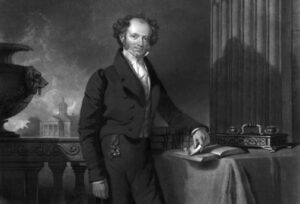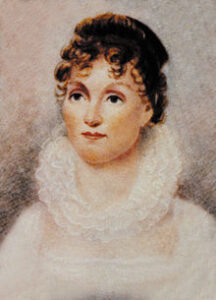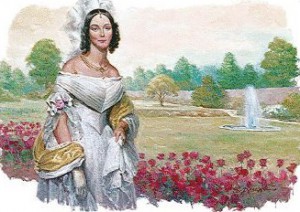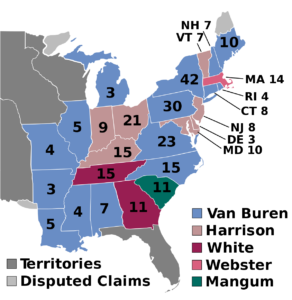Archive for September 27th, 2020
» posted on Sunday, September 27th, 2020 by Linda Lou Burton
#8. Van Buren, Martin
 Linda Lou Burton posting from Little Rock, Arkansas – Martin Van Buren (December 5, 1782 – July 24, 1862) was the eighth president of the United States (1837-1841). It may be disheartening to be remembered as one of the “most forgettable” presidents, but that’s where historians tend to rank him. When they remember. There are a few unique things about Martin you may want to remember though. He was the first president born in the United States, and the first president for which English was a second language. Yes, that actually does make sense; the first seven presidents were born on soil that later BECAME the United States and they fought tooth and toenail to make it happen. By the time Martin was born in Kinderhook, New York, a little town on the Hudson River just south of Albany, things had calmed down. His father Abraham was a Patriot during the American Revolution; he owned an inn and tavern in Kinderhook and also was town clerk. Martin’s mother Maria already had three children when she married Abraham; together they had five; Martin was third. And Martin’s family spoke DUTCH. “Maarten” didn’t learn English until he started to school. He got a basic education at the village schoolhouse, briefly studied Latin at Kinderhook Academy, and went on to Washington Seminary at Claverack. But with a father as a tavern keeper, perhaps Martin’s most valuable experience growing up was being able to interact with many different types of people. Yes, you’d want him to come to your party, and sure, he’d be there, mingling and talking with everyone.
Linda Lou Burton posting from Little Rock, Arkansas – Martin Van Buren (December 5, 1782 – July 24, 1862) was the eighth president of the United States (1837-1841). It may be disheartening to be remembered as one of the “most forgettable” presidents, but that’s where historians tend to rank him. When they remember. There are a few unique things about Martin you may want to remember though. He was the first president born in the United States, and the first president for which English was a second language. Yes, that actually does make sense; the first seven presidents were born on soil that later BECAME the United States and they fought tooth and toenail to make it happen. By the time Martin was born in Kinderhook, New York, a little town on the Hudson River just south of Albany, things had calmed down. His father Abraham was a Patriot during the American Revolution; he owned an inn and tavern in Kinderhook and also was town clerk. Martin’s mother Maria already had three children when she married Abraham; together they had five; Martin was third. And Martin’s family spoke DUTCH. “Maarten” didn’t learn English until he started to school. He got a basic education at the village schoolhouse, briefly studied Latin at Kinderhook Academy, and went on to Washington Seminary at Claverack. But with a father as a tavern keeper, perhaps Martin’s most valuable experience growing up was being able to interact with many different types of people. Yes, you’d want him to come to your party, and sure, he’d be there, mingling and talking with everyone.
 Martin’s nickname was “Little Van;” he was 5’6” and slight. At the age of 14 he began reading law at the office of Peter Silvester. Life in Martin’s family was pretty “down to earth” and casual; his clothing was homespun and rough. The Silvesters chided him about that; not an appearance suitable for an aspiring lawyer! Martin listened to what they said; he began to dress, and behave, in a more, “upscale” manner. Except he stayed true to his father’s Democratic-Republican leanings. How did that work out for Martin?
Martin’s nickname was “Little Van;” he was 5’6” and slight. At the age of 14 he began reading law at the office of Peter Silvester. Life in Martin’s family was pretty “down to earth” and casual; his clothing was homespun and rough. The Silvesters chided him about that; not an appearance suitable for an aspiring lawyer! Martin listened to what they said; he began to dress, and behave, in a more, “upscale” manner. Except he stayed true to his father’s Democratic-Republican leanings. How did that work out for Martin?
New York New York
The Silvesters decided he should complete his education with a Democratic-Republican attorney; so off he went (spiffy clothes and all) to New York City, and an apprenticeship with William Van Ness, a political lieutenant of Aaron Burr. And that got him into the intricacies of politics. He was admitted to the New York bar in 1803, at the age of 21. In his lifetime, he was elected or appointed to eight different jobs in government.
Government Positions
- New York State Senator, 1813-15
- New York Attorney-General, 1815-19
- United States Senator, 1821-29
- Governor of New York, 1829
- Secretary of State, 1829-1831 (under Jackson)
- Minister to England, 1831
- Vice President, 1833-1837 (under Jackson)
- 8th President of the United States, 1837-1841
 Martin got married and had children too. In 1807 he and his childhood sweetheart Hannah Hoes (1783-1819) married; together they had five sons; four lived to adulthood. Hannah was Dutch too (in that part of New York state it was almost a given); she spoke English, but with a marked accent. Sadly, only twelve years into their marriage, she died of tuberculosis at the age of 36; the children were 12, 9, 7 and 2. Martin was 37; he never remarried, another in the list of “widowers in the White House.”
Martin got married and had children too. In 1807 he and his childhood sweetheart Hannah Hoes (1783-1819) married; together they had five sons; four lived to adulthood. Hannah was Dutch too (in that part of New York state it was almost a given); she spoke English, but with a marked accent. Sadly, only twelve years into their marriage, she died of tuberculosis at the age of 36; the children were 12, 9, 7 and 2. Martin was 37; he never remarried, another in the list of “widowers in the White House.”
When he first arrived he tried managing the social events there, but enlisted the help of his daughter-in-law Angelica Singleton Van Buren in 1838. Angelica got advice from Dolley Madison (they were distant relatives) and things began to liven up; she was praised as a “lady of rare accomplishments.” But overall, it backfired. Angelica began to lean towards a formal style; you can guess how it went from  there. Her plan to re-landscape the White House grounds to resemble the royal gardens of Europe set the press on fire, and opponents attacking. Pennsylvania Whig Congressman Charles Ogle referred to her as part of the presidential “household” in his famous Gold Spoon Oration, an attack delivered in Congress depicting Martin as living a royal lifestyle. Not something that would lead to the re-election of the man who followed eight years of the “Andrew Jackson” style, especially during the deep depression that was going on in the country at the time.
there. Her plan to re-landscape the White House grounds to resemble the royal gardens of Europe set the press on fire, and opponents attacking. Pennsylvania Whig Congressman Charles Ogle referred to her as part of the presidential “household” in his famous Gold Spoon Oration, an attack delivered in Congress depicting Martin as living a royal lifestyle. Not something that would lead to the re-election of the man who followed eight years of the “Andrew Jackson” style, especially during the deep depression that was going on in the country at the time.
I wondered about the connection between Andrew and Martin – two vastly different personalities and styles; a Mutt and Jeff pairing. But Andrew chose him as Secretary of State; he was Andrew’s vice president; and Andrew supported his candidacy in 1836. The list of scandals and deal-makings during Martin’s presidency is too long and boring to recite here; some of it worked but most went sour. Yes, it was Andrew Jackson’s Indian Removal Act of 1830; but it was during Martin Van Buren’s term that 19 treaties were negotiated with Indian tribes. In 1838, it was Martin Van Buren who directed General Winfield Scott to forcibly remove all who had not complied. The Trail of Tears; 20,000 Cherokee relocated against their will. The Seminoles in Florida; the Second Seminole War, the refusal to admit Texas as a slave state – Martin earned another nickname: Martin Van Ruin.
Ah, politics. From the Virginia Dynasty to the Common Man to the Albany Regency. Do the presidential choices made reflect more on those running for office, or those voting?
Martin Van Buren ran for president, or tried to, four times, and lost three. Here are the numbers:
 1836: Martin Van Buren 170. William Henry Harrison 73.
1836: Martin Van Buren 170. William Henry Harrison 73.
 1840: William Henry Harrison 234. Martin Van Buren 60.
1840: William Henry Harrison 234. Martin Van Buren 60.
He received no electoral votes in 1844 or 1848.
He never sought public office again after the 1848 election, but he continued to follow national politics. His health began to fail in 1861, and he died of bronchial asthma and heart failure at home on July 24, 1862, age 79.He is buried in the Kinderhook Reformed Dutch Church Cemetery, as are his wife Hannah, his parents, and his son Martin Van Buren Jr. Martin Van Buren outlived all four of his immediate successors: Harrison, Tyler, Polk, and Taylor.
Here’s a bit of trivia that might be fun to remember about Martin Van Buren: Kinderhook, New York was sometimes referred to as “Old Kinderhook” in speeches, and print, so during his campaign, O K Clubs formed to support him. O K later came to mean “all right.”
O K, Martin. Maybe you should have ignored the Silvesters when they advised you to become a fancy-pants. It seems you understood people well, thanks to your father, and that tavern.
